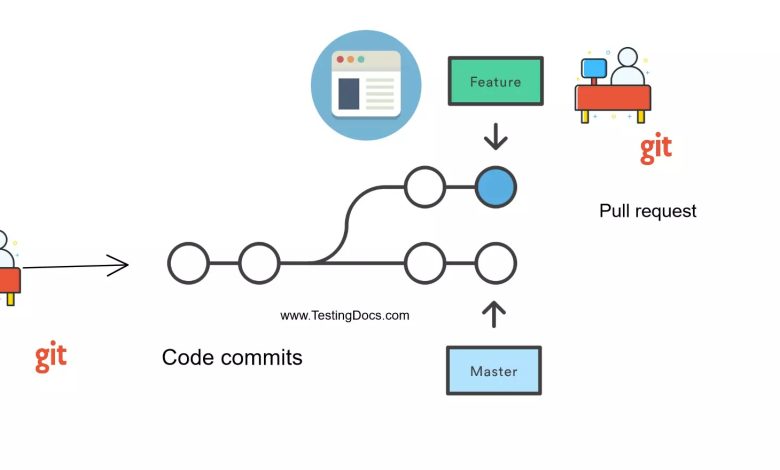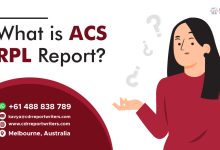Git Pull Request Basics

A “pull request” is a feature in Git that makes it easier for software developers to collaborate. Normally, Git pull requests allow you to tell other developers about changes you have pushed to any particular branch in a repository. Through this, multiple people can work on open-source projects.
Imagine you’ve discovered a project on GitHub that you’d want to contribute to. But how? You are not a hardcore developer, and you have no idea what source control terminology means. Do not worry. A Git Pull Request on Git is the solution (PR).
This article will cover the basics of Git pull requests and how to submit a pull request using the command line to a Git repository so that you may help with open-source software projects.
What is Git?
Git is a distributed open-source version control system that simplifies the management of cooperative software projects. Numerous projects keep their files in a Git repository, and services like GitHub have improved accessibility, value, and efficiency of sharing and contributing code.
Pull requests, which ask a project to accept changes you have made to its code repository, are contributions made by the larger developer community to open-source projects that are housed in public repositories.
What is a Git Pull request?
When a contributor or developer is prepared to start the process of integrating new code changes with the main project repository, they submit a pull request, also known as a merge request.
The repository (or “repo”) of a project houses all of the project’s code, product knowledge, metadata, and other data/information. A DevOps or operations team member who is in charge of maintaining a repository is known as a repository maintainer or manager. They decide which upgrades can be incorporated into the finished product and subsequently made available to end customers.
When a developer submits a pull request, the repository keeper evaluates the new code updates to decide whether or not they are ready for release. In the absence of pull requests, incomplete or improperly written code modifications might be hastily merged into the main repository and might damage or interfere with the functioning of the live product. Pull requests only merge code that has been properly evaluated and authorized, preserving the product’s integrity and enhancing the user experience.
When working on new product upgrades, pull requests promote collaboration and open communication in addition to safeguarding the primary project repository. By emphasizing and informing the team when someone completes a new feature, they also assist in keeping teams engaged.
The ‘Git Pull’ command
To access changes (commits) from a remote repository to the local repository, use the pull command. With the remote-tracking branches, it updates the local branches. The branches that have been configured to push to and pull from the remote repository are known as remote-tracking branches. It is usually a compilation of the fetch and merges commands. It begins by obtaining the remote modifications and combining them with the local repository.
The Pull request
GIT PULL can enable others to view changes you make to a repository. It is used to indicate that you have made a modification to the repository you are working on. Alternatively known as a target repository.
To pull something from a branch, just say: “PULL.”
git pull ‘remote_name’ ‘branch_name’
Combining git merge, which will merge the branch from a remote repository to a local branch, with Git fetch, which will fetch the most recent commits in the local repository, creates the Git pull command. Additionally, “remote name” is the name of the repository and “branch name” is the name of the particular branch.
Creating a Pull request
Based on the technologies being used and the type of repository, creating pull requests may differ from organization to organization (ex: GitHub, BitBucket, etc.). However, these three components are frequently included when creating a pull request:
Drafting
The developer will start with a draught when creating a pull request. They can title and succinctly summarize their code changes here. They must provide the type of update (whether it is a bug fix or a new feature), along with the source repository/branch and destination repository/branch.
A developer must indicate that a draught pull request is ready for review before it can be merged.
Merging
When a developer’s pull request is accepted by the repository maintainer, merging takes place. The repository administrator must examine the developer’s finished work before merging. They will offer feedback on any problems and ask the developer to make any necessary changes. The repository keeper can then securely combine the updates with the primary project repository, making it live for end users, after any and all updates have been made.
Updating
The developer will be informed and given any comments or input for resolving the issue if the repository maintainer requests any changes to the code updates before merging. The developer can update the pull request with their new commits added for further review and approval once they have fixed the problem.
How does the Pull request work?
A Git pull request essentially goes through five major processes from beginning to end. Now, it’s crucial to keep in mind that pull requests in various workflows could differ slightly in certain small regions. The process that follows, nevertheless, is mostly unchanged.
- On their local repository, a developer starts an open-source project in a special branch.
- When the branch is prepared, the developer sends it to a public repository like Bitbucket.
- After that, the developer submits a pull request.
- The remainder of the team reviews the code collectively. They look it through, talk about it, and make changes as necessary.
- The project maintainer adds (merges) the feature into the official repository after it is finished and ready. This pull request is then closed.
Conclusion
Simply put, pull requests are a mechanism for project owners and editors to work together without giving each other too much direct access or possibly stomping on each other’s toes. Keep in mind that any Git-based collaborative workflows are not replaced by Git pull requests. However, they are a useful addition to the process that facilitates collaboration for all team members.
Working on open-source projects using Git and GitHub requires knowledge of how pull requests in Git operate. It follows that anyone can make Git pull requests, and if your code submissions are approved, they contribute to creating something that is accessible to all.



